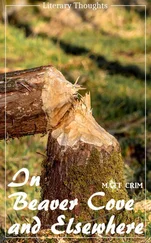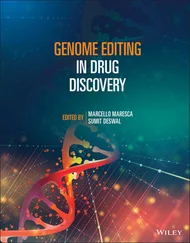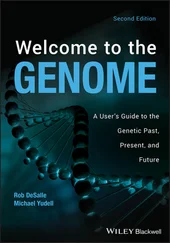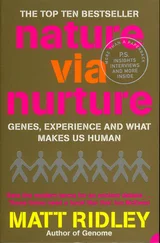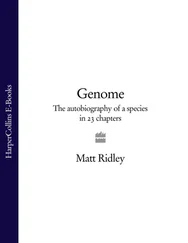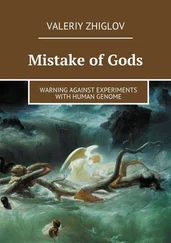Genome - Matt Ridley
Здесь есть возможность читать онлайн «Genome - Matt Ridley» — ознакомительный отрывок электронной книги совершенно бесплатно, а после прочтения отрывка купить полную версию. В некоторых случаях можно слушать аудио, скачать через торрент в формате fb2 и присутствует краткое содержание. Жанр: Старинная литература, на английском языке. Описание произведения, (предисловие) а так же отзывы посетителей доступны на портале библиотеки ЛибКат.
- Название:Matt Ridley
- Автор:
- Жанр:
- Год:неизвестен
- ISBN:нет данных
- Рейтинг книги:5 / 5. Голосов: 1
-
Избранное:Добавить в избранное
- Отзывы:
-
Ваша оценка:
- 100
- 1
- 2
- 3
- 4
- 5
Matt Ridley: краткое содержание, описание и аннотация
Предлагаем к чтению аннотацию, описание, краткое содержание или предисловие (зависит от того, что написал сам автор книги «Matt Ridley»). Если вы не нашли необходимую информацию о книге — напишите в комментариях, мы постараемся отыскать её.
Matt Ridley — читать онлайн ознакомительный отрывок
Ниже представлен текст книги, разбитый по страницам. Система сохранения места последней прочитанной страницы, позволяет с удобством читать онлайн бесплатно книгу «Matt Ridley», без необходимости каждый раз заново искать на чём Вы остановились. Поставьте закладку, и сможете в любой момент перейти на страницу, на которой закончили чтение.
Интервал:
Закладка:
The Laetoli fossilised footprints tell as plain a tale of our ancestors'
upright walking as we could wish for.
Yet we still know too little. Were the Laetoli ape-people a male, a female and a child or a male and two females? What did they eat?
What habitat did they prefer? Eastern Africa was certainly growing drier as the Rift Valley interrupted the circulation of moist winds from the west, but that does not mean they sought dry places.
Indeed, our need for water, our tendency to sweat, our peculiar adaptation to a diet rich in the oils and fats of fish and other factors (even our love of beaches and water sports) hint at something of an aquatic preference. We are really rather good at swimming. Were we at first to be found in riverine forests or at the edges of lakes?
In due time, human beings would turn dramatically carnivorous.
A whole new species of ape-man, indeed several species, would appear before that, descendants of Laetoli-like creatures, but not ancestors of people, and probably dedicated vegetarians. They are called the robust australopithecines. The genes cannot help us here, because the robusts were dead ends. Just as we would never have known about our close cousinship with chimps if we could not read S P E C I E S 3 3
genes, so we would never have been aware of the existence of our many and closer australopithecine cousins if we had not found fossils (by 'we', I mean principally the Leakey family, Donald Johanson and others). Despite their robust name (which refers only to their heavy jaws), robust australopithecines were little creatures, smaller than chimps and stupider, but erect of posture and heavy of face: equipped with massive jaws supported by giant muscles. They were into chewing - probably grasses and other tough plants. They had lost their canine teeth the better to chew from side to side. Eventually, they became extinct, some time around a million years ago. We may never know much more about them. Perhaps we ate them.
After all, by then our ancestors were bigger animals, as big as modern people, maybe slightly bigger: strapping lads who would grow to nearly six foot, like the famous skeleton of the Nariokotome boy of 1.6 million years ago described by Alan Walker and Richard Leakey.7 They had begun to use stone tools as substitutes for tough teeth. Perfectly capable of killing and eating a defenceless robust australopithecine — in the animal world, cousins are not safe: lions kill leopards and wolves kill coyotes - these thugs had thick craniums and stone weapons (the two probably go together). Some competitive impulse was now marching the species towards its future explosive success, though nobody directed it - the brain just kept getting bigger and bigger. Some mathematical masochist has calculated that the brain was adding 150 million brain cells every hundred thousand years, the sort of useless statistic beloved of a tourist guide.
Big brains, meat eating, slow development, the 'neotenised' retention into adulthood of childhood characters (bare skin, small jaws and a domed cranium) - all these went together. Without the meat, the protein-hungry brain was an expensive luxury. Without the neotenised skull, there was no cranial space for the brain. Without the slow development, there was no time for learning to maximise the advantages of big brains.
Driving the whole process, perhaps, was sexual selection. Besides the changes to brains, another remarkable change was going on.
Females were getting big relative to males. Whereas in modern 3 4 G E N O M E
chimpanzees and australopithecines and the earliest ape-men fossils, males were one-and-a-half times the size of females, in modern people the ratio is much less. The steady decline of that ratio in the fossil record is one of the most overlooked features of our pre-history. What it means is that the mating system of the species was changing. The promiscuity of the chimp, with its short sexual li-aisons, and the harem polygamy of the gorilla, were being replaced with something much more monogamous: a declining ratio of sexual dimorphism is unambiguous evidence for that. But in a more monogamous system, there would now be pressure on each sex to choose its mate carefully; in polygamy, only the female is choosy. Long pair-bonds shackled each ape-man to its mate for much of its reproductive life: quality rather than quantity was suddenly important. For males it was suddenly vital to choose young mates, because young females had longer reproductive lives ahead of them. A preference for youthful, neotenous characters in either sex meant a preference for the large, domed cranium of youth, so it would have begun the drive towards bigger brains and all that followed therefrom.
Pushing us towards habitual monogamy, or at least pulling us further into it, was the sexual division of labour over food. Like no other species on the planet, we had invented a unique partnership between the sexes. By sharing plant food gathered by women, men had won the freedom to indulge the risky luxury of hunting for meat. By sharing hunted meat gathered by men, women had won access to high-protein, digestible food without having to abandon their young in seeking it. It meant that our species had a way of living on the dry plains of Africa that cut the risk of starvation; when meat was scarce, plant food filled the gap; when nuts and fruits were scarce, meat filled the gap. We had therefore acquired a high-protein diet without developing an intense specialisation for hunting the way the big cats did.
The habit acquired through the sexual division of labour had spread to other aspects of life. We had become compulsively good at sharing things, which had the new benefit of allowing each individual to specialise. It was this division of labour among specialists, S P E C I E S 3 5
unique to our species, that was the key to our ecological success, because it allowed the growth of technology. Today we live in societies that express the division of labour in ever more inventive and global ways.
From the here and now, these trends have a certain coherence.
Big brains needed meat (vegans today avoid protein-deficiency only by eating pulses); food sharing allowed a meaty diet (because it freed the men to risk failure in pursuit of game); food sharing demanded big brains (without detailed calculating memories, you could be easily cheated by a freeloader); the sexual division of labour promoted monogamy (a pair-bond being now an economic unit); monogamy led to neotenous sexual selection (by putting a premium on youthful-ness in mates). And so on, round and round the theories we go in a spiral of comforting justification, proving how we came to be as we are. We have built a scientific house of cards on the flimsiest foundations of evidence, but we have reason to believe that it will one day be testable. The fossil record will tell us only a little about behaviour; the bones are too dry and random to speak. But the genetic record will tell us more. Natural selection is the process by which genes change their sequences. In the process of changing, though, those genes laid down a record of our four-billion year biography as a biological lineage. They are, if we only know how to read them, a more valuable source of information on our past than the manuscripts of the Venerable Bede. In other words, a record of our past is etched into our genes.
Some two per cent of the genome tells the story of our different ecological and social evolution from that of chimpanzees, and theirs from us. When the genome of a typical human being has been fully transcribed into our computers, when the same has been done for the average chimpanzee, when the active genes have been extracted from the noise, and when the differences come to be listed, we will have an extraordinary glimpse of the pressures of the Pleistocene era on two different species derived from a common stock. The genes that will be the same will be the genes for basic biochemistry and body planning. Probably the only differences will be in genes 3 6 G E N O M E
Читать дальшеИнтервал:
Закладка:
Похожие книги на «Matt Ridley»
Представляем Вашему вниманию похожие книги на «Matt Ridley» списком для выбора. Мы отобрали схожую по названию и смыслу литературу в надежде предоставить читателям больше вариантов отыскать новые, интересные, ещё непрочитанные произведения.
Обсуждение, отзывы о книге «Matt Ridley» и просто собственные мнения читателей. Оставьте ваши комментарии, напишите, что Вы думаете о произведении, его смысле или главных героях. Укажите что конкретно понравилось, а что нет, и почему Вы так считаете.





